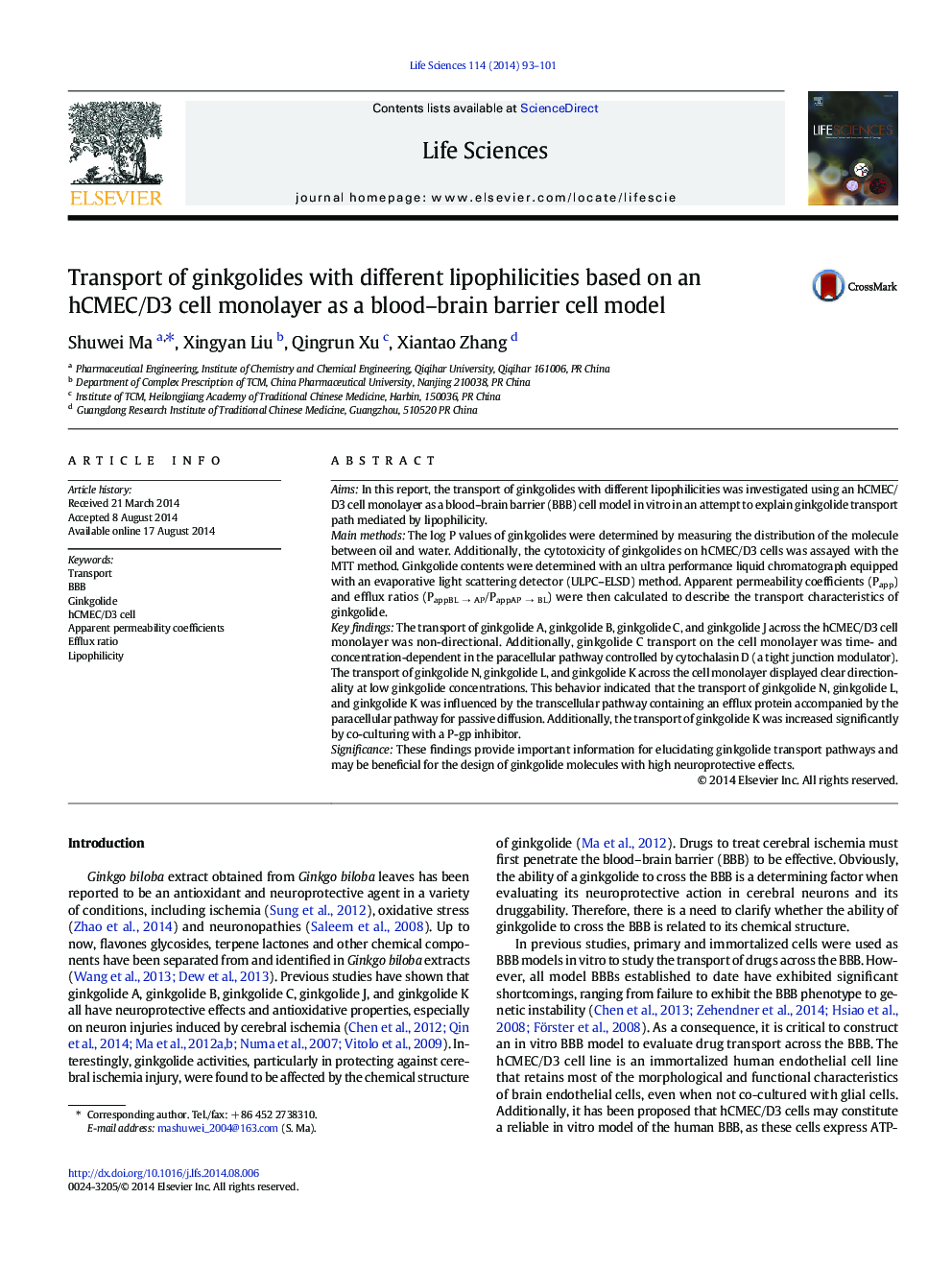| کد مقاله | کد نشریه | سال انتشار | مقاله انگلیسی | نسخه تمام متن |
|---|---|---|---|---|
| 2551064 | 1124693 | 2014 | 9 صفحه PDF | دانلود رایگان |

AimsIn this report, the transport of ginkgolides with different lipophilicities was investigated using an hCMEC/D3 cell monolayer as a blood–brain barrier (BBB) cell model in vitro in an attempt to explain ginkgolide transport path mediated by lipophilicity.Main methodsThe log P values of ginkgolides were determined by measuring the distribution of the molecule between oil and water. Additionally, the cytotoxicity of ginkgolides on hCMEC/D3 cells was assayed with the MTT method. Ginkgolide contents were determined with an ultra performance liquid chromatograph equipped with an evaporative light scattering detector (ULPC–ELSD) method. Apparent permeability coefficients (Papp) and efflux ratios (PappBL → AP/PappAP → BL) were then calculated to describe the transport characteristics of ginkgolide.Key findingsThe transport of ginkgolide A, ginkgolide B, ginkgolide C, and ginkgolide J across the hCMEC/D3 cell monolayer was non-directional. Additionally, ginkgolide C transport on the cell monolayer was time- and concentration-dependent in the paracellular pathway controlled by cytochalasin D (a tight junction modulator). The transport of ginkgolide N, ginkgolide L, and ginkgolide K across the cell monolayer displayed clear directionality at low ginkgolide concentrations. This behavior indicated that the transport of ginkgolide N, ginkgolide L, and ginkgolide K was influenced by the transcellular pathway containing an efflux protein accompanied by the paracellular pathway for passive diffusion. Additionally, the transport of ginkgolide K was increased significantly by co-culturing with a P-gp inhibitor.SignificanceThese findings provide important information for elucidating ginkgolide transport pathways and may be beneficial for the design of ginkgolide molecules with high neuroprotective effects.
Journal: Life Sciences - Volume 114, Issue 2, 2 October 2014, Pages 93–101